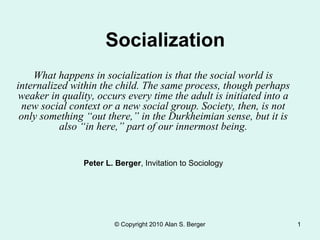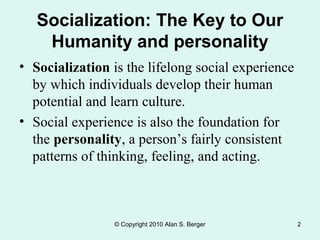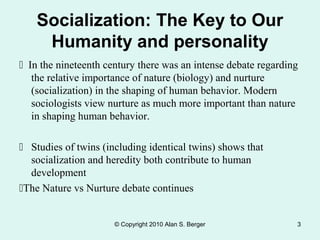Socialization is the lifelong process by which individuals develop their human potential and personality through social experience and learning culture. The social world becomes internalized in children through socialization, and this process continues as adults take on new social roles and contexts. Personality and behavior are shaped more by nurture than nature, as evidenced by studies of twins and those raised in social isolation. The development of self emerges through social interactions and learning to see oneself from the perspectives of others.
























